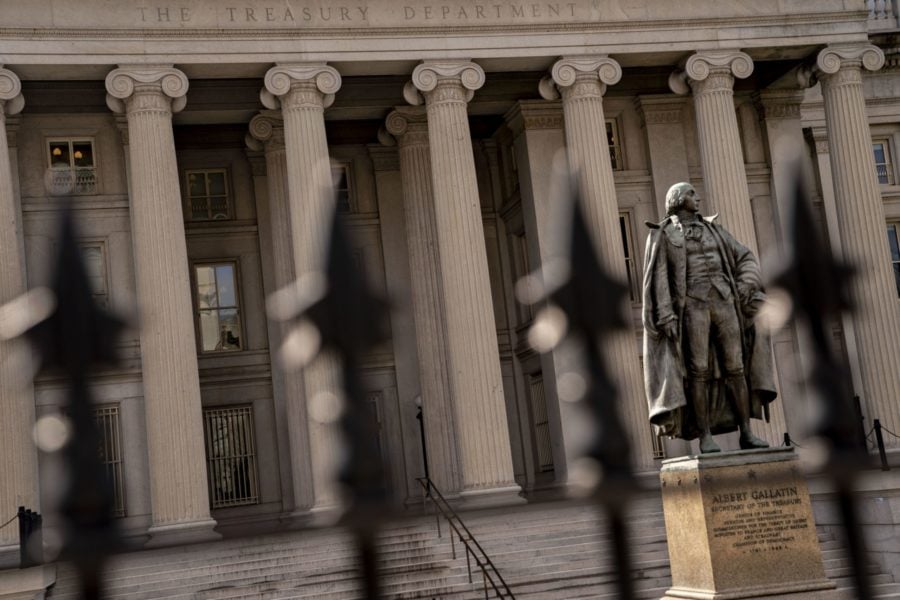

The Treasury Department proposed to temporarily guarantee money market mutual funds with taxpayer dollars as part of its coronavirus stimulus plan, according to a document obtained by Bloomberg News.
In a proposal to lawmakers sent early Wednesday, the department laid out plans to temporarily permit use of its exchange stabilization fund to guarantee money markets, according to the document.
Treasury proposed terminating the authority when President Donald Trump ends the national emergency declaration he announced Friday.
Money market mutual funds became a crucial weak spot during the finial crisis when losses from the collapse of investment bank Lehman Brothers caused the venerable Reserve Primary Fund to break the one dollar net asset value mark — known as breaking the buck — in September 2008. That contributed greatly to the sense of panic in financial markets, causing credit to seize up and the crisis to go global.
This time around, the Fed’s unleashing of massive liquidity to the money market has already helped ease the squeeze for funding that had reached levels not seen since that time. But Treasury backstopping money market mutual funds, that have trillions in assets, could be essential if conditions worsen.
That said, financial market reforms since the crisis have made money market funds much less volatile and smaller in size, possibly limiting the impact of any disruption in that sector.

Chasing productivity is one thing, but when you're cutting corners, missing details, and making mistakes, it's time to take a step back.

It is not clear how many employees will be affected, but none of the private partnership’s 20,000 financial advisors will see their jobs at risk.

The historic summer sitting saw a roughly two-thirds pass rate, with most CFP hopefuls falling in the under-40 age group.

"The greed and deception of this Ponzi scheme has resulted in the same way they have throughout history," said Daniel Brubaker, U.S. Postal Inspection Service inspector in charge.

Elsewhere, an advisor formerly with a Commonwealth affiliate firm is launching her own independent practice with an Osaic OSJ.
Stan Gregor, Chairman & CEO of Summit Financial Holdings, explores how RIAs can meet growing demand for family office-style services among mass affluent clients through tax-first planning, technology, and collaboration—positioning firms for long-term success
Chris Vizzi, Co-Founder & Partner of South Coast Investment Advisors, LLC, shares how 2025 estate tax changes—$13.99M per person—offer more than tax savings. Learn how to pass on purpose, values, and vision to unite generations and give wealth lasting meaning
